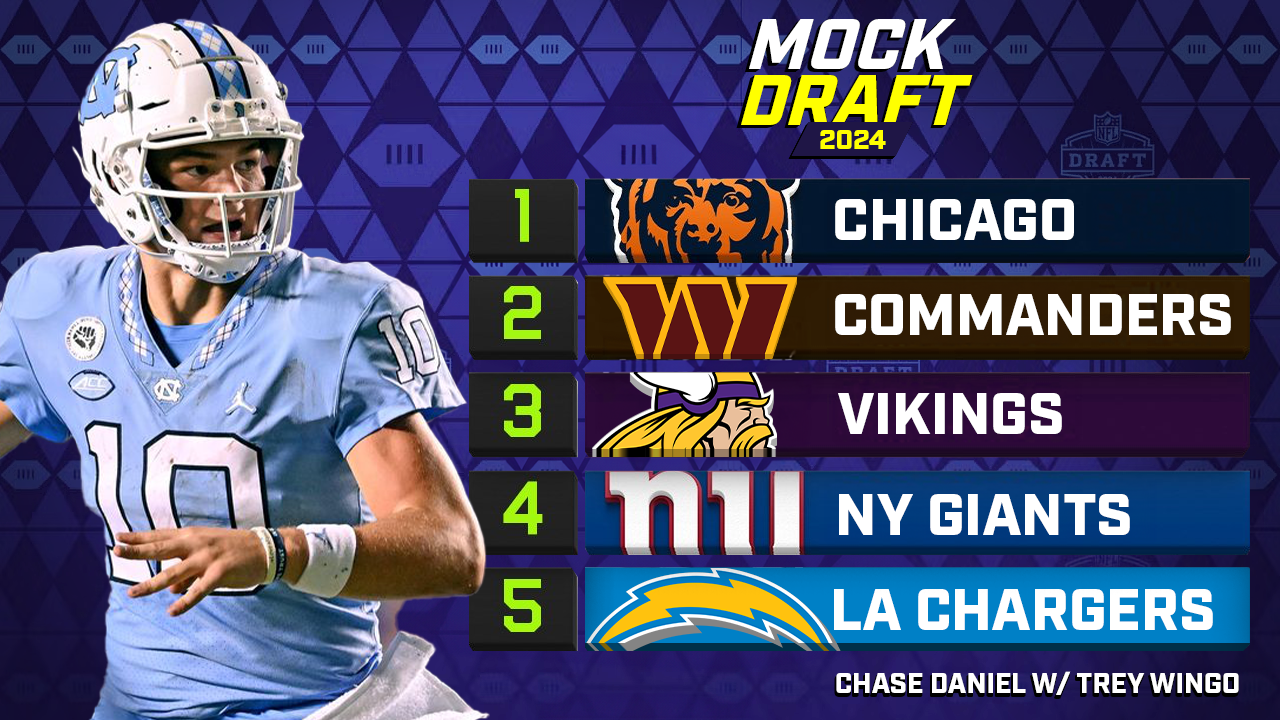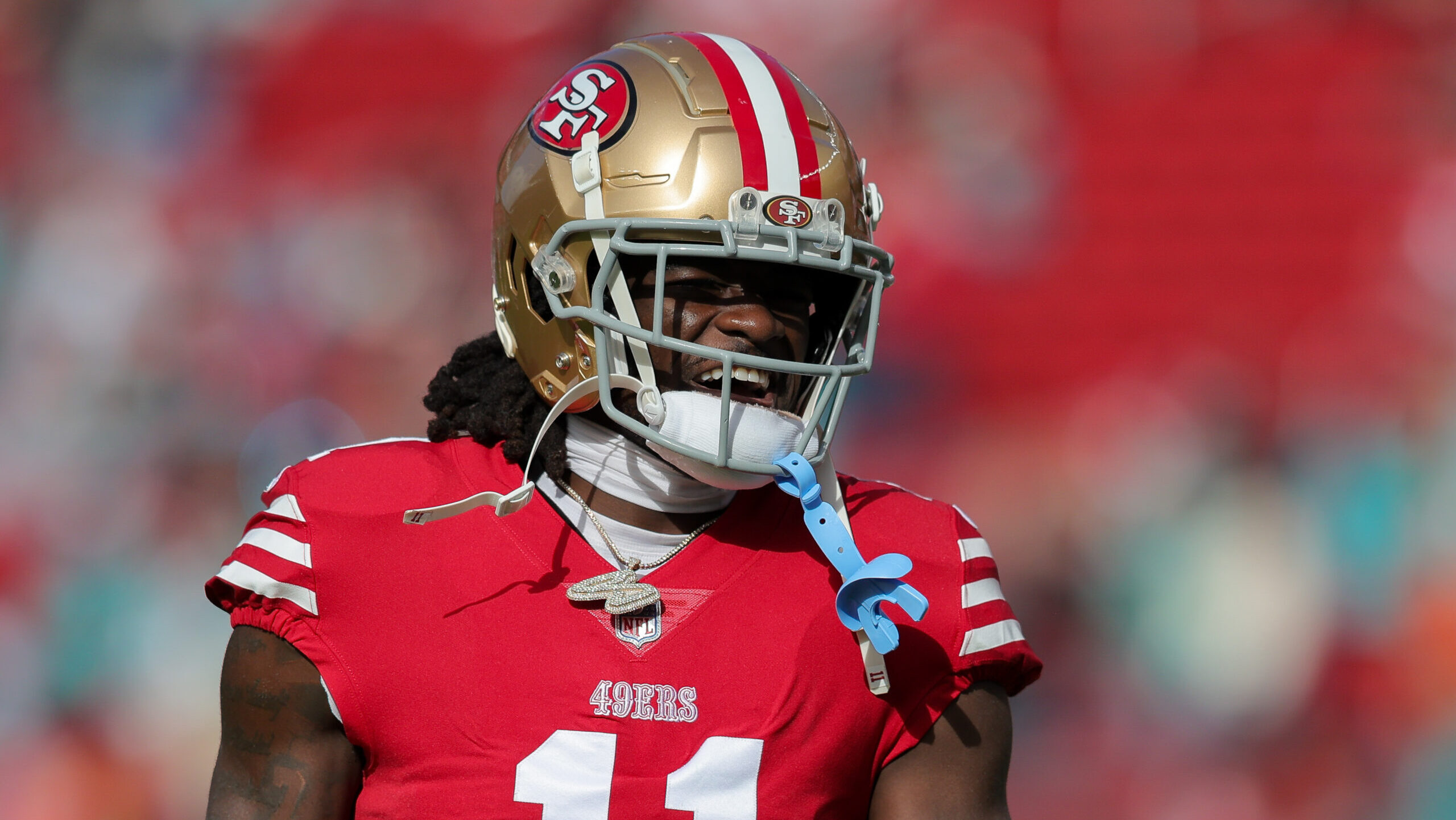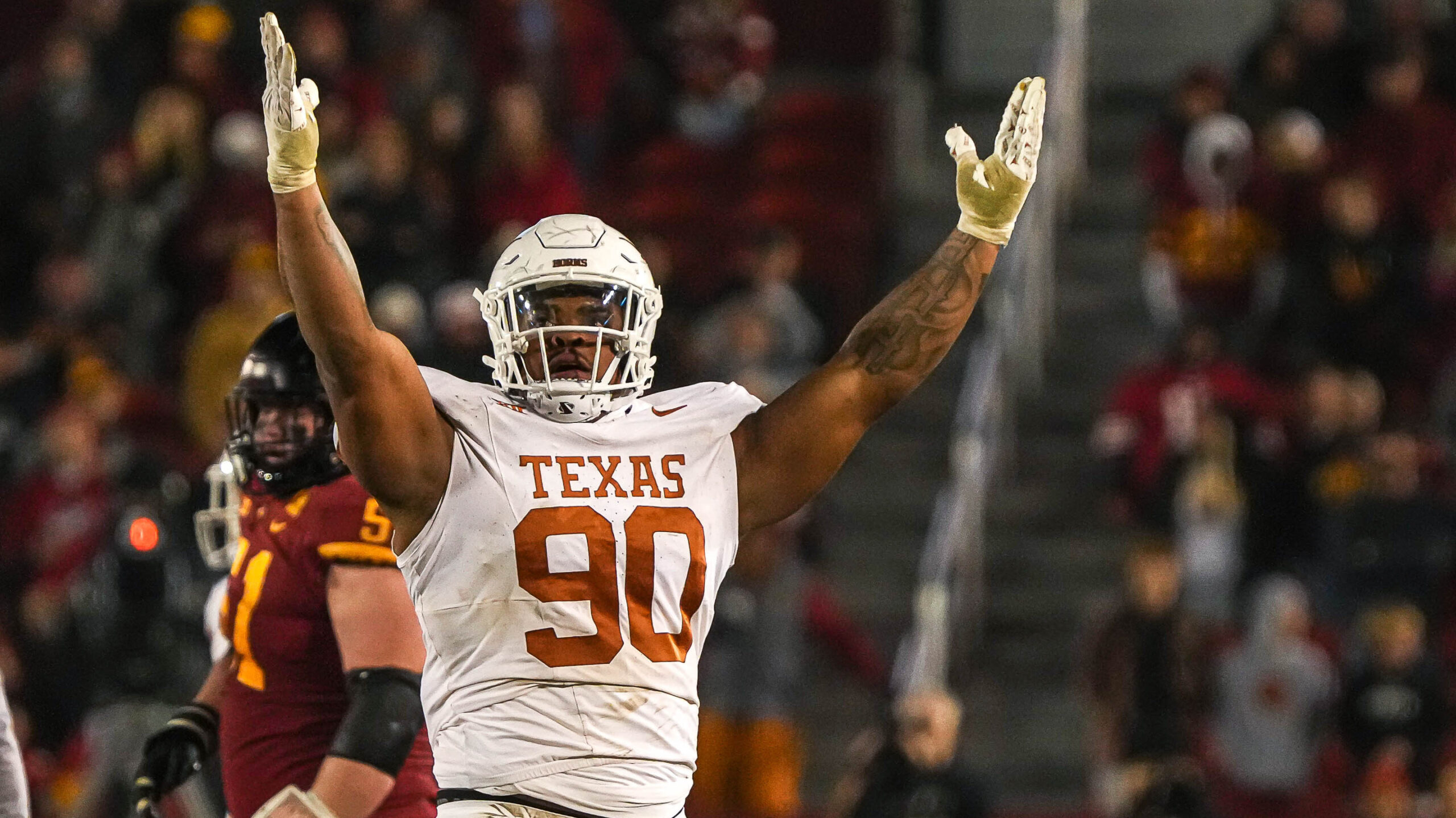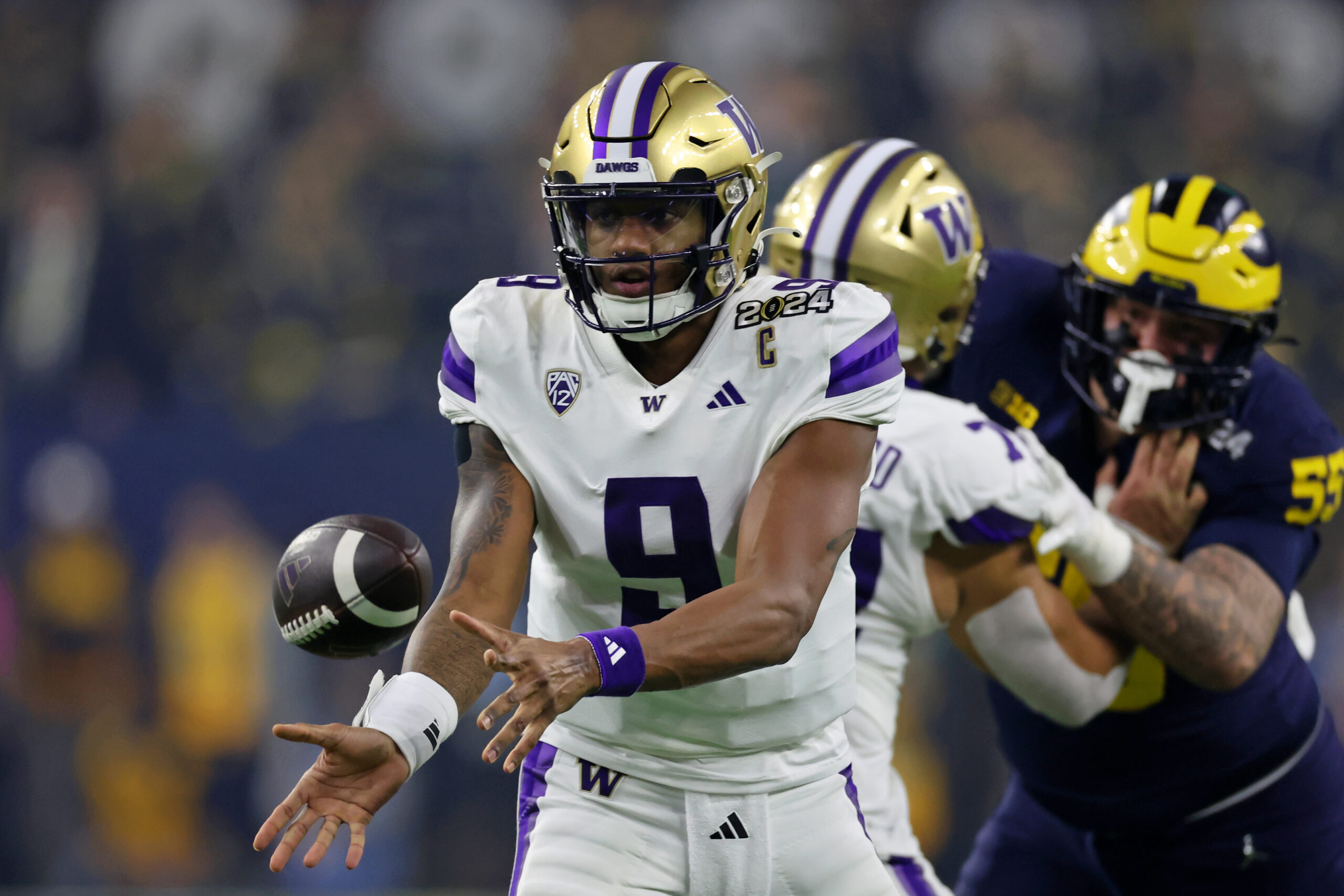NFL Analysis
6/16/22
14 min read
The Secret to Finding a Franchise Quarterback: Part 1
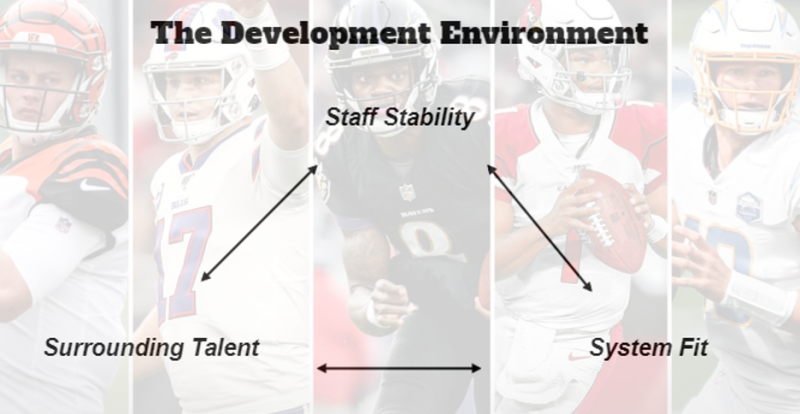
Speaking on The 33rd Team Huddle this week, former NFL Head Coach Chris Palmer succinctly stated how rare franchise quarterbacks are when he said, “There are 330 million people in the United States, and we can’t find 32 who can play quarterback in the NFL.”
As sobering as that may be for front offices, coaching staffs, and diehard fans alike, it’s true. Championship-caliber quarterbacks are mythical creatures. They are uncommonly found but found they must be. As far as winning titles goes, whether a franchise can catch one of these gun-slinging unicorns is the sole determinant of its future.
Given this rarity, drafting the right quarterback is as low odds a game as winning the lottery. That said, some teams, like the Bills, the Chiefs, and the Chargers, to name a recent few, have clearly found a way to win. Did they simply get lucky? Or did they make their own luck?
In hopes of answering these questions, a qualitative analysis of all quarterbacks selected in the first two rounds of the last ten drafts was performed. It’s easy to get caught up in the minutiae of traits like decision-making, accuracy, and leadership with each individual case, so this analysis was approached from a different angle. By objectively analyzing the entire collection of the subjective data, it became possible to extract macro-level themes repeatedly playing themselves out on the micro level. The accomplished goal was to identify whether there are ways to systematically increase the likelihood of hitting on quarterback draft picks.
Generally, when a team drafts a quarterback in the first two rounds, its vision for that player is for him to become the face of the franchise. Careers can have ebbs and flows, making the exercise of pinning “hits” and “misses” trickier than expected, particularly in the curious cases of Ryan Tannehill, Carson Wentz, and Jared Goff. So, both for the sake of simplicity and the goal of this study, the players who signed franchise quarterback extensions, as well as younger players showing undeniable signs of promise, were designated as “hits.” All other players were designated as “misses,” except for the cases of first-contract players who either could be on the verge of fresh starts with other teams or are at career points where it is simply too early to tell. These cases received the “jury’s out” designation.
Included in the “Notes” column of the data are factors that might have had an outsized effect on each quarterback’s fate.
Data
Hits

Jury’s Out

Misses

Discussion
While analyzing the data, a few recurring themes continued to show that traced a common thread between not only the hits but also the misses. Namely, the three variables of staff stability, surrounding talent, and system fit have extremely high predictive power as it relates to determining the future of a young quarterback.
On a deeper level, though, it became apparent that the aforementioned themes are not entities that exist in isolation of each other. Rather, these themes are the codependent components of a larger meta-theme called the development environment.
The Development Environment
The development environment is the environment in which a rookie quarterback finds himself when he enters his new team’s building. It is comprised of a host of factors, including the team’s culture, the players with whom he will get to work, and the offensive system, and the entirety of it must be consciously and diligently developed prior to his arrival.
The quality of a team’s development environment is the most important indicator of its young quarterback’s destiny and dictates whether he will be able to reach his potential. The symbiotic interplay between the component themes creates the overarching environment in which the face of the franchise can grow.
It explains how a Derek Carr, who was drafted in the second round, can have a better career than either a Jameis Winston or a Marcus Mariota, both of whom were drafted at the very top of the first round. It’s not so much about each quarterback’s talent, and even less so about their draft position. Whether they are successful in the NFL is about the environment in which they are placed for development.
In this sense, developing a franchise quarterback is like growing a mango tree. It needs time (staff stability and ideally some redshirt weeks), water/sunlight (surrounding talent), and a tropical climate (system fit) in order to reach its potential to bear succulent fruit (wins). As explained in the discussion of each factor below, a strict adherence to the growth process as defined by the development environment significantly increases a team’s odds of landing its quarterback of the future. Environments that lack any of the three key factors are unsuitably conditioned to allow a quarterback to grow.

Staff Stability
The first component of the development environment is staff stability. The franchise quarterback serves two primary functions: he’s the model of the culture and the operator of the offense. To be able to perform those functions effectively, it is critical to have stability on the coaching staff, particularly in the positions of Head Coach, Offensive Coordinator, and/or QB Coach. Most of the hits saw very little to no staff turnover during their first couple seasons in the league.
This continuity breeds familiarity with and comfortability in the cultural and offensive systems the passers have ultimately been selected to lead. It also allows both the coaches and the players to commit to multi-year skill development plans that can fine tune tools like accuracy, decision-making, etc. to help the quarterbacks incrementally improve on their way to their ceilings.
An extension of the staff stability concept is a QB room with a veteran presence. Ideally, that veteran can play enough to buy the rookie some redshirt time (think Alex Smith/Patrick Mahomes and Joe Flacco/Lamar Jackson) so that they don’t need to be the guy in Week 1; nonetheless, simply having a veteran to learn from proves to be invaluable. In addition to the Mahomes and Jackson examples, both Justin Herbert and Carson Wentz had Chase Daniel in the room, Jimmy Garoppolo got to study under Tom Brady for a couple years before heading to San Francisco, and the Buffalo Bills have made it a priority to pair Josh Allen with a veteran, be it Matt Barkley, Mitchell Trubisky, Case Keenum, or a de facto player-coach in Davis Webb.
A lack of staff stability, as shown in many of the cases of the misses, can be extremely detrimental to the development of quarterbacks. Baker Mayfield, Blake Bortles, and Marcus Mariota all had multiple Head Coaches, Offensive Coordinators, and/or QB Coaches during their first few seasons. With each change, each quarterback was sent back to square one in both the offensive system, and, more importantly, the culture. In terms of learning the offense, it was like they were rookies all over again. As for the culture, they needed to learn and adopt the new customs and language that defined the new culture of which they were expected to be the leader.
The staff changes also tended to correlate with cases in which the quarterbacks were forced into action long before they were ready. E.J. Manuel, Geno Smith, and DeShone Kizer are examples of players who needed time both to clean up their mechanics and to transition into pro-style systems, but they didn’t get that time. This lack of developmental time, particularly if performance is poor in the early going, can shake a player’s confidence beyond a recoverable point. It’s like over-applying fertilizer to expedite the mango tree’s fruit-bearing before it is ready. It can kill it.
Any staff change during the quarterback’s league transition represents an uprooting and transplantation of the mango tree, which runs serious risks of stunting the tree’s growth. Staff stability, coupled with a strong quarterback room, provides time for the tree to root itself and grow where it’s planted; in two to three years’ time, its wins will be harvested.
Surrounding Talent
The second component of the development environment is the talent that surrounds the quarterback. The importance of having talented skill players and a quality offensive line in place upon the arrival of a potential franchise player seems obvious, but it is so essential it truly cannot be overstated. As a passer adjusts to the faster game speed and tighter throwing windows of the NFL, having a front that can provide time to work progressions, the targets who can create separation, and/or a running game that can keep defenses honest prevents the quarterback from struggling to one-man-show it.
The hits on franchise quarterbacks over the course of the past ten drafts provide an abundance of examples that illustrate this point. Andrew Luck had Reggie Wayne and T.Y. Hilton in his rookie season; Patrick Mahomes had Travis Kelce and Tyreek Hill; Justin Herbert had Keenan Allen and Mike Williams; Joe Burrow had Tyler Boyd and Tee Higgins; both Carson Wentz and Jimmy Garoppolo (in SF) had elite tight ends and top-tier offensive line play; Jared Goff had an excellent running game.
The string of misses throughout the last decade tells a cautionary tale of what can happen when a young quarterback is sent into battle with neither a weapon nor a shield. Neither Sam Darnold nor Josh Rosen was offered much in the way of protection, and E.J. Manuel, Marcus Mariota, and Geno Smith all lacked a single go-to receiver, let alone multiple, with whom to grow. Even with a talented supporting cast, playing quarterback in the NFL is one of the most difficult jobs in the world. Attempting to do it in the absence of surrounding talent is a fool’s errand.
Now, this is also where the interplay between the development environment factors begins to show. Time is needed, probably at least two team-building cycles, in order for a front office regime and coaching staff to build a line and load an arsenal. The previously discussed staff stability provides that time. This relationship works the other way, too. Part of ensuring staff stability is steady progress in the win/loss column, which is, primarily, a function of consistently increasing the level of talent on the roster. Any time a change of staff happens, roster turnover tends to follow, effectively restarting the clock on the building process of the development environment. So, just as staff stability buys time for continued talent collection, continued talent collection buys time for staff stability. It’s precisely this time that allows for the quarterback to progress on schedule within the established development environment.
Just as the mango tree needs water and sunlight to grow, a young quarterback needs weapons and protection to succeed. Surrounding talent is a vital aspect of the development environment. As history shows, starting a rookie quarterback without winning talent around him and hoping for success is the literal equivalent of depriving a tree of water and sunlight and crossing one’s fingers for growth.
System Fit
The third component of the development environment is system fit. The data shows that, in most of the cases of the hits, the system in which each quarterback played was perfectly fit to his respective skillset. The importance of the system fit is two-fold. It not only simplifies the learning process in a league where practice time is very limited, but also plays to the strengths of the quarterback, who is still an unfinished product at that point. There are two main ways to go about ensuring the right fit, and the 2019 Offensive Rookie of the Year and Most Valuable Player award winners provide excellent examples of each path to victory.
The first way is to find the player whose skill set fits exactly what the coaching staff wants to do offensively. Kliff Kingsbury was committed to his system, so the Cardinals drafted Kyler Murray because of how perfectly Murray's skillset fit the scheme. This concept is applicable for any system. It is the same path the Colts and the Eagles took with Andrew Luck and Carson Wentz, respectively, as each player’s West Coast background meshed with the West Coast system into which they were stepping.
The second way is to find a unique talent and adapt the system to match his skill set. This path is less common and requires adaptable offensive minds on the coaching staff, but when it works, it can lead to an MVP in Lamar Jackson and a high-powered Ravens offense. The team drafted a rare player, scrapped their pro-style system run by Joe Flacco, and built a modern, RPO-heavy spread and let Jackson be the straw that stirs the drink.
Within this context, a recipe for disaster repeated among the misses was that of selecting a quarterback with exceptionally good traits and expecting him to adjust to a completely different system in a short amount of time. Many quarterbacks coming out of college today have never even taken a snap from under center, let alone operated from five- to seven-step drops to execute full-field reads. The greater the disparity between the college system and the pro system, the more time the quarterback will need to learn and adjust. Considering the restrictions on practice time, it is crucial to significantly reduce the amount of learning by making systematic adjustments to fit the passer’s strengths, especially if the quarterback will be expected to play early. The better the system fit, the quicker the learning process.
Of course, system fit is interactive with the other two development environment components. To continue with the Ravens example, part of what made the system fit work was the surrounding talent that complemented Jackson’s skillset; the team added a ton of outside speed to stress coverage and also brought in Mark Ingram to force defenses to be stout against the inside run while always having to respect the threat of Jackson keeping it himself. This was a project that needed time to come together, and, again, that time was afforded by the stability of the coaching staff.
The necessity of the right system fit is what makes knocking a player for being a “system quarterback” so ironic. Think about it. Both Tom Brady and Lamar Jackson are game-changing players, but to have them swap systems and expect the same results would be ludicrous. Their skill sets are polar opposites. The same goes for Kyler Murray and Andrew Luck. This analysis shows that every quarterback is a system quarterback. Put more simply, the quarterback is the system.
A mango tree can only grow in a tropical climate. In any other climate, it will struggle to grow and bear fruit. A franchise quarterback can only reach his championship-winning potential in the system for which he is designed.
Conclusion
The implications of this research provide a blueprint for front offices to follow in their quest for their quarterback of the future. The two-phase quest begins with the development environment’s careful construction, its own process that begins a year or two before the quarterback enters the building. It involves identifying the right staff to develop the quarterback, weaponizing and fortifying the offense with skill position and offensive line talent and preparing to adapt the system to match the skillset of the quarterback.
The selection made in the draft is not the end of the quest, but the beginning of its second phase, the developmental phase, another multi-year process during which the collaboration of the three component themes within the development environment is of utmost importance. As demonstrated above, all three of the component themes coexist in symbiotic relationships. They work together. They feed off each other.
If this two-phase quest is done correctly, the odds of hitting on this paramount pick, the drafting of the franchise quarterback, are significantly increased. After all, as this research indicates, the hits aren’t made in the selection process; the hits are made in the development process. Even the most promising young mango tree in the world requires a confluence of factors to reach its fruit-bearing potential.
So, when looking for the right quarterback, the questions are not:
“Is he the right fit for us?”
or
“Is he ready to help us win?”
The questions are:
“Are we the right fit for him?”
and
“Are we ready to help him grow?”


